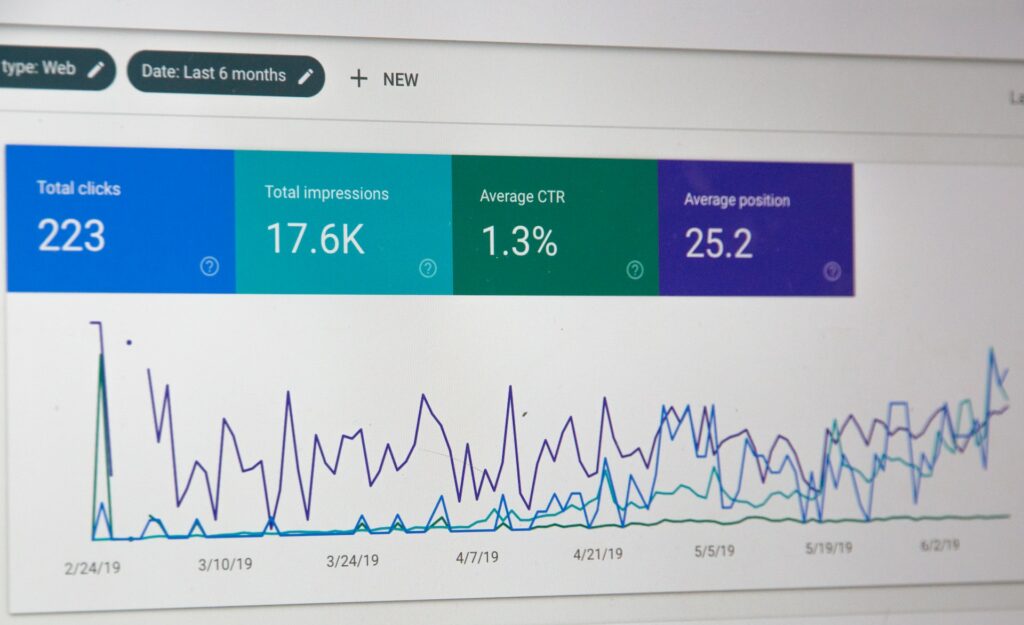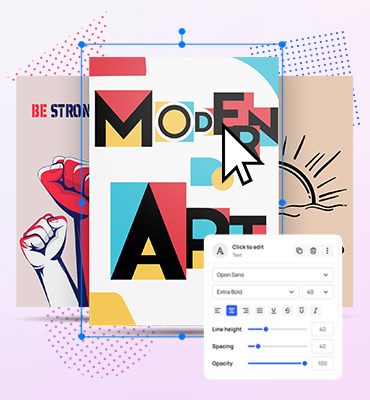The Fundamentals of Incorporating Closed Captions in UX Design

Think ‘subtitles’. Where did your mind go right then? You probably had video streaming on Netflix or Hulu pop into your head. Many people want subtitles when they watch a movie. But, that’s not the only case. What about those noisy restaurants where you can’t hear anything or a professional setting where it’s rude to turn on the sound? Incorporating subtitles and closed captions is useful in many ways and one of the key places to do this in UX design.
Why is this important, you wonder?
Today, up to 80% of viewers are more likely to finish a video that has subtitles. Some of them use the subtitles because they can’t use the audio for some reason. But, many of the viewers prefer captions because they like watching with the sound off.
When in a public place, 69% of viewers will turn the sound off when watching a video. Twenty-five percent will turn it off even if they are alone or in a place where listening to the audio isn’t impractical.
This goes to show that subtitles and captions are no longer reserved for watching movies or created to give the disabled access to information. Many people will turn on closed captioning because they feel more comfortable doing so.
Subtitles and closed captions are becoming critical in the digital world, especially now that multimedia content is more popular than ever. Not having subtitles can make you lose a big portion of your customers.
On the other hand, if you use subtitles and captions in your UX design, this can enhance the user experience, bring more people to your content, and even boost the conversion rates for your business.
In this article, you’ll learn how to incorporate subtitles and captions in your UX design, as well as why you should do it.
Subtitles vs. captions: understanding the difference
At first glance, these two terms might appear to mean the same thing. They have the same main goal – to convey the information in a text. However, the two terms aren’t exactly interchangeable.
Captions are usually designed for people with disabilities i.e. deaf people, allowing them access to the information. Closed captions are the text version of the audio elements in a video file. They can include sound effects, as well as dialogue.
Subtitles are part of internationalization instead of accessibility. This means that they are designed to translate the spoken language into written language for people who might not understand the spoken words. In other words, they’re a word problem solver for humans who may struggle to understand different foreign tongues.
Surely, there are no set boundaries to how these two can be used. One can know the language and hear it perfectly but use the captions because they like it that way.
How to incorporate subtitles and captions into your UX design
It wasn’t that long ago that closed captioning was difficult to come by, and making subtitles took forever and cost a fortune. Today, videos produced without proper captioning or even subtitles are much rarer. This is not a complicated task thanks to subtitling and professional captioning services.
Web design companies or UX designers can easily add this important element to their video content by using Happy Scribe. The service offers transcription and subtitling led by AI and helped by language professionals. It takes speech-to-text technology to a new level and does so within a short timeframe and at an affordable cost.
Why it’s important to have captions and subtitles in UX design
Now that you know how you can create subtitles and captions, it’s time to move on to the reasons why. Before we delve into detail, here are just a few of the many reasons why any good UX design includes a text version of the video content:
- Accessibility for people with disabilities
- Inclusivity and accessibility to all
- More success with your PPC campaign
- Better search engine optimization
1. Accessibility for people with disabilities
Closed captions have served this purpose for a long time – to make content accessible to individuals who have trouble hearing or are deaf. At this very moment, over 1.5 billion people in the world live with hearing loss, a number that’s predicted to grow to 2.5 billion by 2050. That’s a big portion of anyone’s targeted audience.
By offering a text representation of the audio in your videos, you are enabling deaf or hard-of-hearing individuals to access the content and understand it without hindrance. On one hand, this breaks down the barriers for disabled people and gives you a wider reach. On the other, it shows that your design values inclusiveness and accessibility.
Your design should, of course, account for different disabilities, too. To make the captions more accessible to people with sight problems, you’ll need to use readable fonts in the right size, too.
2. Inclusivity and accessibility to all
Subtitles and closed captions aren’t just used by deaf people. These are also used by busy people, those who prefer not listening to the audio or those who cannot listen at a given point.
Today’s world is fast-paced, to say the least. People consume content on the go, and many of them don’t have their headphones on them whenever they want to play a video.
When a person from your targeted audience commutes to work and watches Instagram reels on their way, they might not be able to turn the sound on because it will disturb others. Another person might watch a video in a very noisy place, and they won’t know what is said without captions.

There are, of course, people who don’t speak the language of the people who speak in your video. There are people whose mother tongue is different and their language skills aren’t as developed in the target language as much as is necessary to understand the content. That’s why you need subtitles. Especially in today’s world, you can definitely generate them with several AI tools. And given you train chatbots on your own data, you can generate even more precise captions.
Your targeted audience can be in a place where audio is not permitted. Or, they can be at work where this is considered unprofessional. It is your job as a UX designer to make the content accessible in any of these scenarios.
That’s why, when hiring UX designers, assessing their ability to craft experiences optimized for diverse contexts is key. Experienced UX designers understand factors impacting usage across settings and can adapt interfaces accordingly. Defining critical evaluation criteria around versatility when selecting UX designers ensures well-rounded talents.
3. More success with your PPC campaign
When you pay for advertisements, it’s easy to think – the ad provider will do the job for me. Yes, this gets your message to your targeted audience more directly than organic marketing but the truth is, the money you spend doesn’t have the biggest effect on conversions.
If you want your PPC campaign to yield the best possible results, you need to focus on the copy, too. To optimize PPC, marketers must focus on what they include in their ads. If your copy doesn’t match the search intent, you will have made that hefty investment for nothing. Clicks and conversions aren’t the same things, and many people learn this the hard way – after they spend a fortune on it.
To optimize your paid search and make sure that people convert, use subtitles and captions. Use them to show the targeted audience that your ad is exactly what they’ve been looking for. If they don’t speak the language, subtitles will help them understand what you’re offering. With captions, you’ll be helping people who cannot listen to the audio to understand what your ad is all about.
4. Better search engine optimization

Finally, captions and subtitles can boost your enterprise SEO. The user experience depends on whether or not users can find your content. By including subtitles and closed captions, UX designers can make sure that their video content is easily scannable and discoverable by search engines. This, in turn, will lead to higher rankings and increased visibility.
When you use closed captions and subtitles, you are providing additional context for search engine crawlers to index. As a result, users can find the information they are looking for more easily.
Useful tips for incorporating closed captions and subtitles in your design
There are many ways in which you can add closed captions and subtitles to your design. For starters, you can add them to the initial design process i.e. insert them in the video during its production stage.
If you have skipped this step and want to improve your design later on, you can add closed captions and subtitles post-production. Automatic captioning tools make this much simpler.
Here are some tips to help you.
Whenever you design closed captions and subtitles, consider the user. Is the text legible? Does it accurately represent the content in the audio? Does it obstruct the visual part of the content?
In addition to this, keep in mind that some people are color-blind, so they might struggle if you choose a messy color scheme. Finally, make sure to provide accurate time coding and to use clear text.
TIP: Use a mockup generator to preview your designs on various devices and resolutions.
Have you been using captions/ subtitles in your UX design?
Closed captions and subtitles now play a vital role in UX design. They offer accessibility to all, enhance their user experience, and improve the SEO all at the same time. As video content grows in popularity, it is the task of designers to prioritize captions and subtitles in their designs. By incorporating these, you can enrich your content and prove yourself to be a designer committed to inclusiveness and diversity.
Author bio
Nadica Metuleva is a senior freelance writer with 8+ years of experience in producing original, high-quality content for clients. She has a Master’s degree in English Literature and Teaching and speaks 4 languages. Nadica has a passion for storytelling and a deep understanding of SEO principles. You can find her samples and more details about her work on LinkedIn.
Related articles
-
 Design Tips
UX vs UI: Key Differences Every Designer Should Know About
Design Tips
UX vs UI: Key Differences Every Designer Should Know About
-
 Design Tips
Design Your Way to the Top: an Entrepreneur’s Guide to Marketing and Design eBook
Design Tips
Design Your Way to the Top: an Entrepreneur’s Guide to Marketing and Design eBook
-
 Marketing Tips
4 Useful Tactics That Will Boost Your Website’s Conversion Rates
Marketing Tips
4 Useful Tactics That Will Boost Your Website’s Conversion Rates
-
 Marketing Tips
How to Sell Digital Downloads on Etsy – The Ultimate Guide
Marketing Tips
How to Sell Digital Downloads on Etsy – The Ultimate Guide
Visualize your design Use a product mockup to showcase your design

Create your design Use our templates to create delightful designs for any medium




